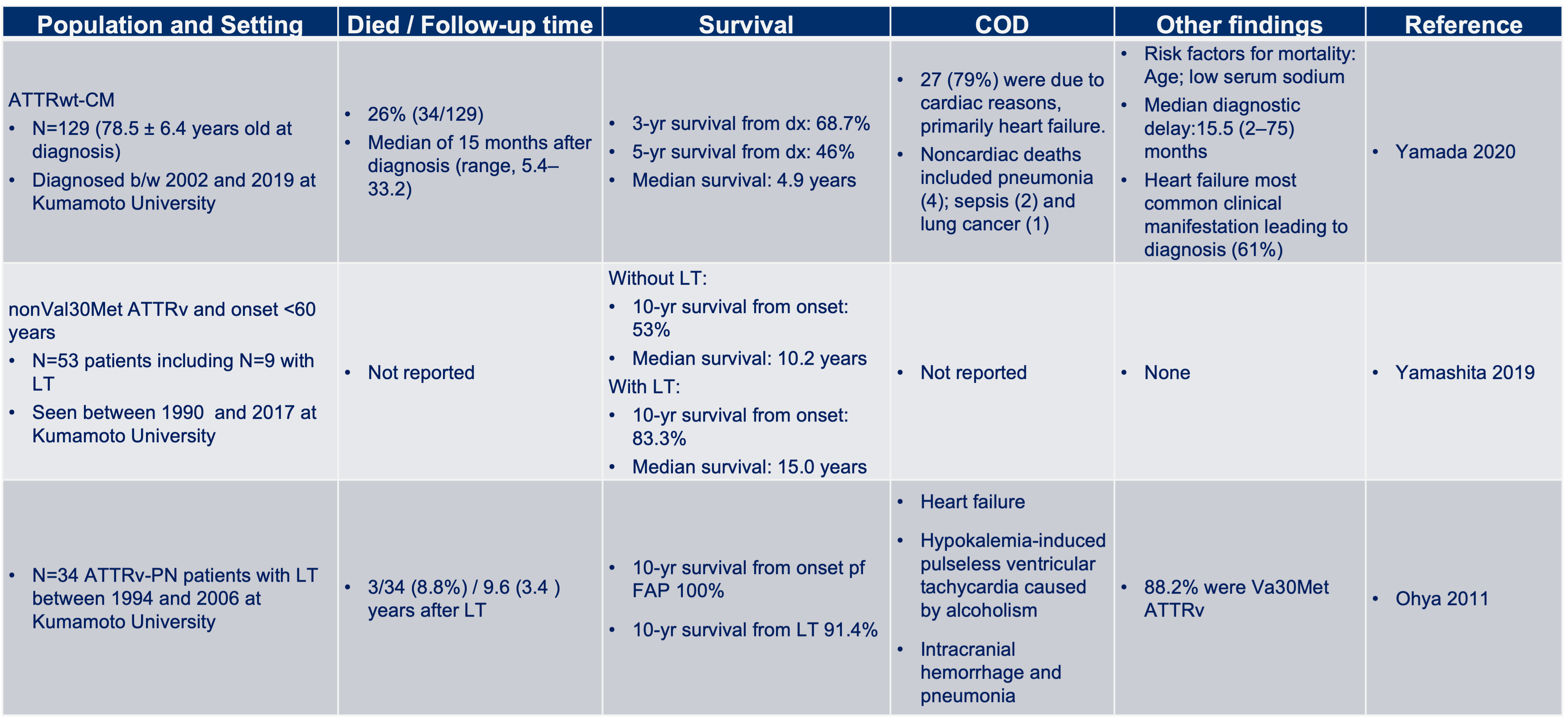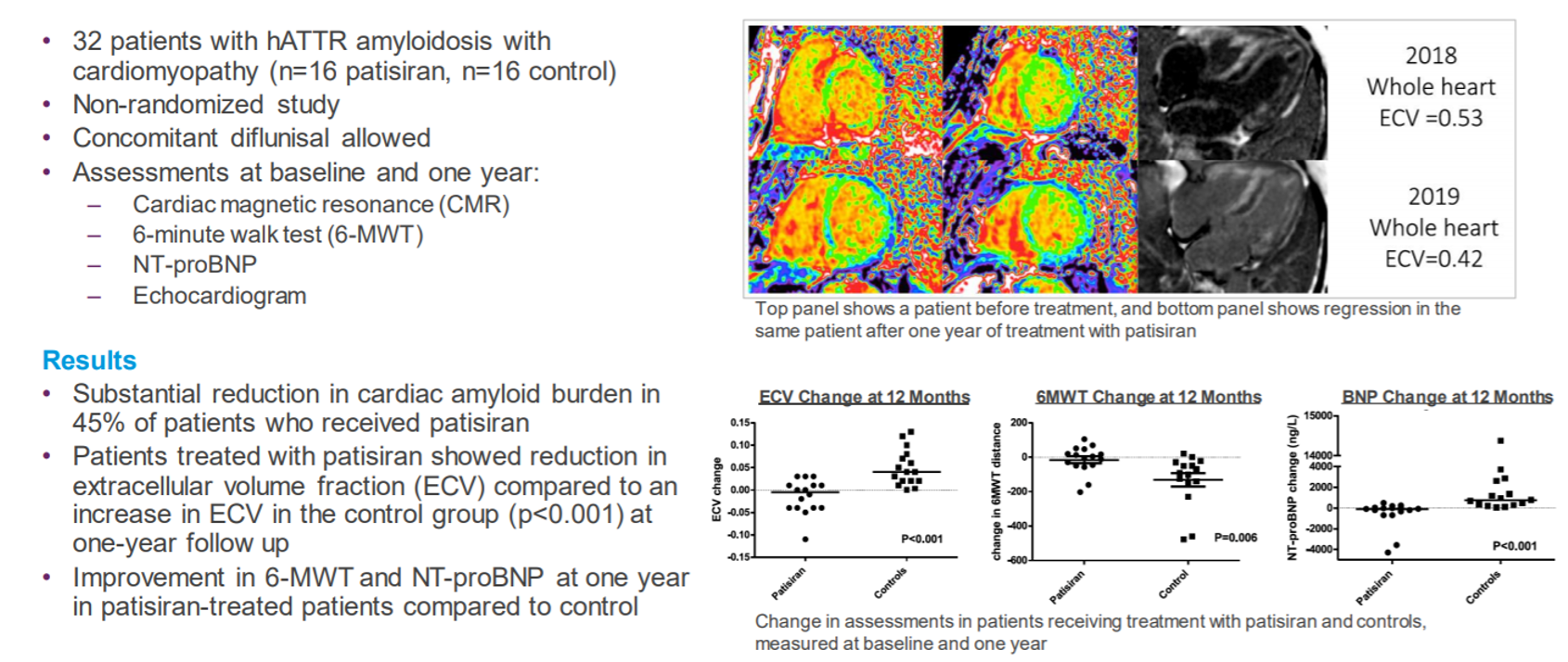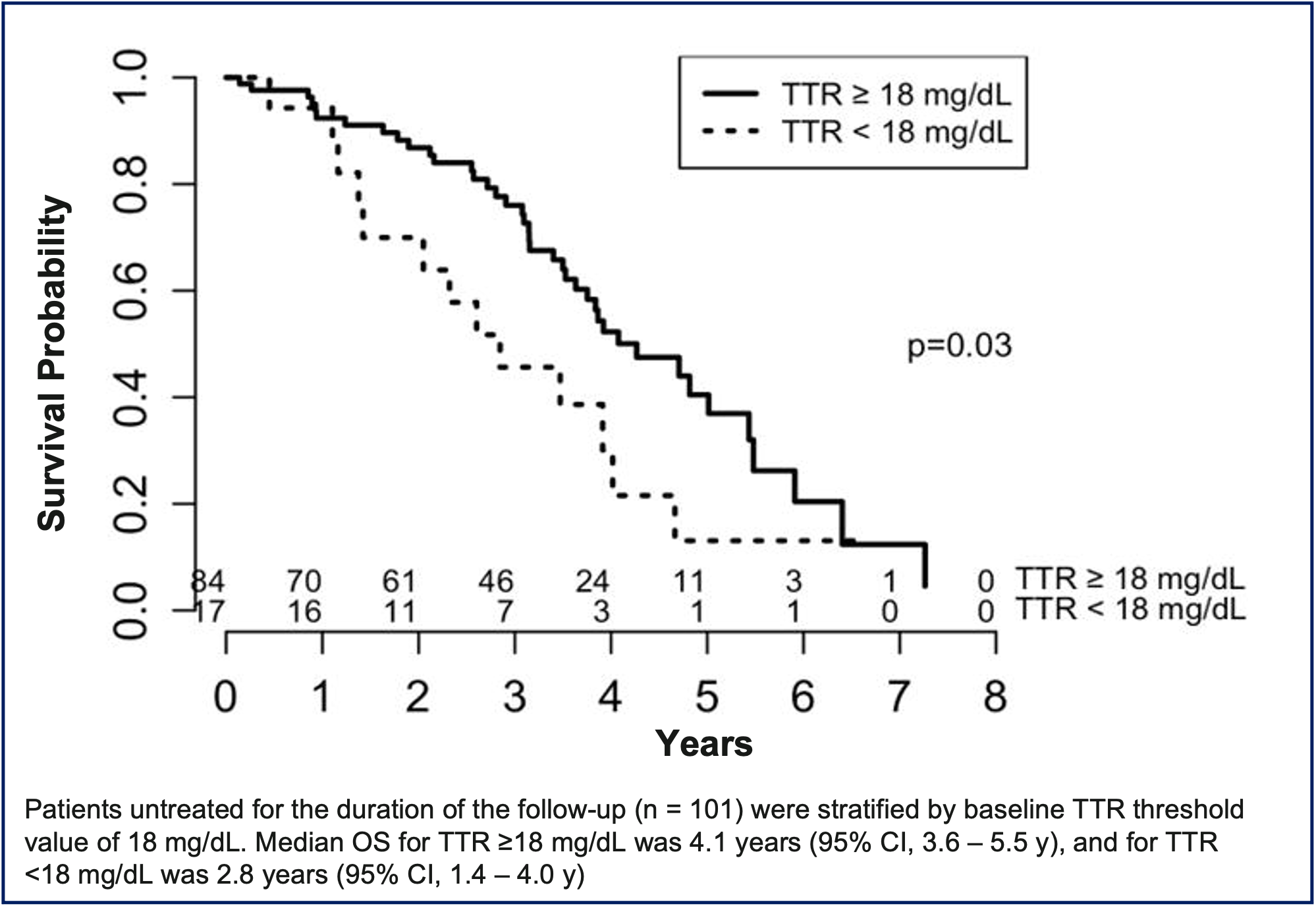
Notes: COD = cause of death; dx = diagnosis; LT = liver transplant
Glossary:
- 6-minute walk test (6MWT), a performance-based test that evaluates an individual’s functional exercise capacity by measuring the distance walked in 6 minutes over a flat, hard surface
ALXN: ATTR Amyloidosis: Epidemiology Dossier. Elissa Wilker & Shona Fang. September 2021. 18_ATTR Amyloidosis Epi Dossier. Citing:
- Yamada T, Takashio S, Arima Y, Nishi M, Morioka M, Hirakawa K, et al. Clinical characteristics and natural history of wild-type transthyretin amyloid cardiomyopathy in Japan. ESC Heart Fail. 2020;7(5):2829-37.
- Yamashita T, Ueda M, Nomura T, Okazaki T, Okada M, Tsuda Y, et al. Natural history and long-term effects of variant protein reduction in non-V30M ATTR amyloidosis. Neurology. 2019;93(16):714-6.
- Ohya Y, Okamoto S, Tasaki M, Ueda M, Jono H, Obayashi K, et al. Manifestations of transthyretin-related familial amyloidotic polyneuropathy: long-term follow-up of Japanese patients after liver transplantation. Surg Today. 2011;41(9):1211-8.


